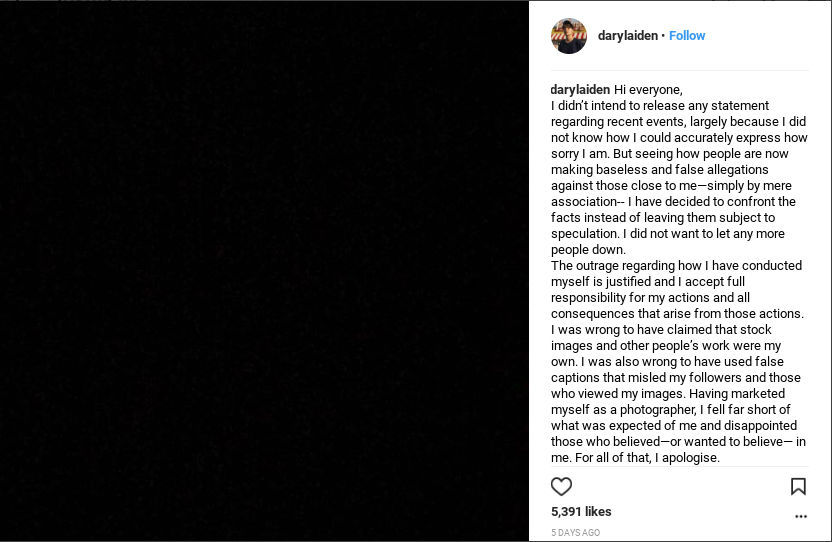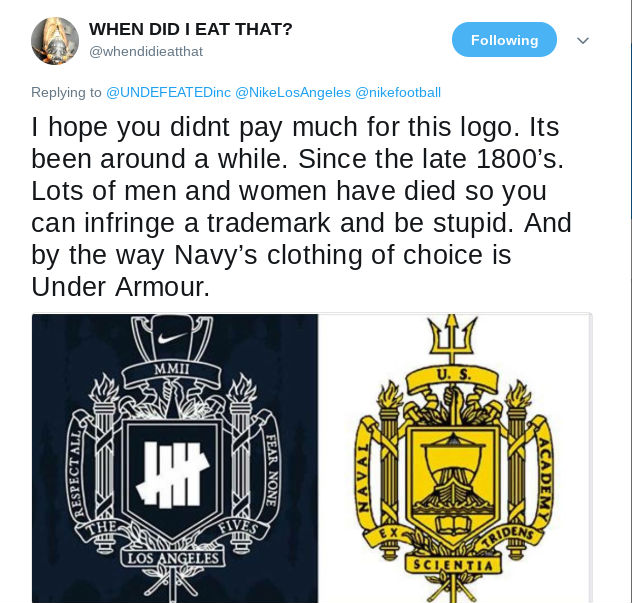Stolen design work: the ugly truth
You can’t trust anyone these days, if these examples of high-profile plagiarism are anything to go by.
In this rapidly evolving digital age, posting work online provides an easy way to get your work out to the world. However, with that comes the risk that it might get used without your permission.
Over the past 12 months, we've seen many examples of blatant plagiarism within the design and creative community, many of which involve large companies using copied artwork in major marketing campaigns. Big brands should definitely know better, and yet that doesn’t seem to stop them taking independent designers’ work from design portfolios, Instagram accounts, or even Pinterest boards, and passing it off as their own, as some of these shocking examples below demonstrate.
But what can you do about it? The truth is, it's a bit of a legal, not to mention confusing, minefield, which very much depends on the situation. We’ll be posting a follow-up article offering professional legal advice on how creatives should respond to plagiarism soon; you can also check out our post: how can designers deal with plagiarism?
01. A superhero has my back
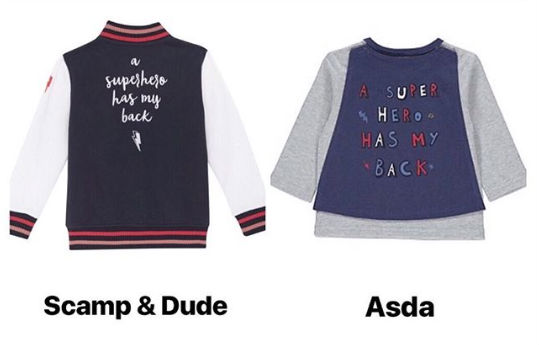
It’s bad enough when you see your brand appear on a big company’s products without any acknowledgement or royalties. But when that brand is based on a profoundly emotional period in your life, it’s even worse. And that’s exactly what happened to Jo Tutchener-Sharper, founder of independent clothing brand Scamp & Dude.
Jo originally came up with the slogan ‘a superhero has my back’ when she was in hospital recovering from brain surgery. “I was so scared that I wouldn't make it through the surgery and would end up leaving my boys without a mummy,” she wrote on Instagram. “A horribly hard thing to go through, but it was this that inspired me to create a brand that helps children feel more secure when apart from their loved ones. A Superhero certainly had my back and I made it through the surgery and Scamp & Dude launched into [Liberty London] 10 months later.”
The brand was not only a hit, but Scamp & Dude went on to work with a number of charities and hospitals to help children in similar situations as Jo's. So when she saw a top from UK supermarket chain Asda featuring the exact same slogan, despite the fact she had already trademarked it, she had a ready made community of supporters to draw on via social media.
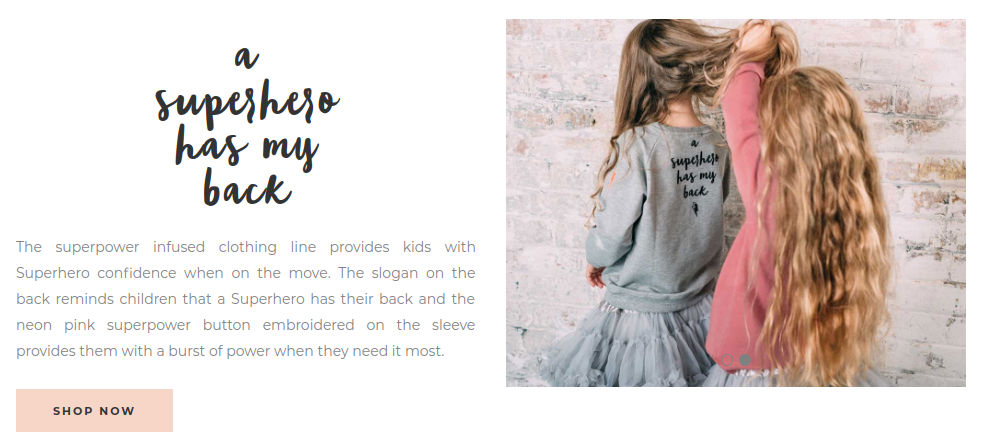
It wasn’t long before her story had been covered in The Independent, The Daily Star, The Daily Mail and The Sun. Jo wrote on Instagram at the time: “So many small brands don’t stand up to the big guys when this happens, put off by expensive legal bills. But by not speaking out and not drawing attention to what goes on, means it continues to happen.
Daily design news, reviews, how-tos and more, as picked by the editors.
“This means a lot to me, so I’m doing this for all of the small brands who need a voice. Big brands need to learn that this is not acceptable. I feel like David taking on Goliath but everyone’s support is making me feel like I can do just that.”
Finally, after fully pursuing the issue, about about six weeks after her first social media post, Jo came to an agreement with Asda, posting on Instagram: "I am very relieved and happy to report that we have come to a suitable agreement with Asda. Asda removed the garment in question from sale on 23rd Feb and we have now agreed full terms of compromise, including compensation. We are happy with the way this has been resolved. A huge thank you to everyone for supporting us, it means the world."
02. Plucked from Pinterest
Sometimes when a big company rips off your work, it’s not the lack of credit or royalties that stings the most; it’s the thought that people will actually think an inferior version of your design is your own work.
That was the case for Morag Myerscough, an award-winning London-based artist known for her colourful and distinctive installations, when she discovered the Unicenter shopping centre in Buenos Aires had a new installation that was striking similar to her own works, Temple of Agape 2014 and Super Structure 2015. Worse still, the artist who had carried out the work actually had the cheek to sign the piece!
After Myerscough complained loudly on social media, she got them to admit the plagiarism publicly. “Basically the branding/production company were shamed into owning up," she recalls. "And the artist who put her name to the visual work took everything down from her site, and implied she'd signed it as the team leader of the painting team rather than the artist’s signature.
“The branding company said they went on Pinterest, pulled off what they liked and presented to their client. Mine was chosen, so they just copied it and seemed to think this was okay (the client implied they were unaware of this). They probably thought they would not be caught out as it was a long way away.
“Finally, they did agree to put money to a social project, but my work took over and I was not looking for compensation. I just wanted to show them that it was not ethically right to steal people's work and pass it off as their own. I do regret not following it up, but I just did not have the energy at the time as my mum had died at Christmas and the first few months of year zapped a lot of my energy.”
The main thing is I don’t want people to think the bad copies are mine
Morag Myerscough
Because she didn’t pursue the company in court, Myerscough is not bound by a legal gag clause and is therefore free to speak her mind on the matter. “They have been other copies since and probably before, but they are so bad,” she says. “The main thing is I don’t want people to think the bad copies are mine. I think it's important to OUT these people, and prevent big agencies to make money from work that has taken many years to achieve and not just let people use the word ‘INSPIRED BY’ to copy their work without speaking with them.”
03. Unduly influenced
In 2018, global brands seem to be falling over themselves to work with influencers: people with huge social media followings who promise to help them reach new demographics. But with the ‘influencer industry’ requiring zero training, entry requirements or legal knowledge, they may be playing with fire.
As a taster of what may be to come, Sony and Uniqlo were recently forced to issue embarrassing statements over their relationship with influencer-photographer Daryl Aiden Yow, who had claimed stock images and other people’s work as his own.
Although there is no suggestion that he did so in the course of work for Sony and Uniqlo, it was still an embarrassment for them to be associated with someone who had profited from the work of other creatives.
Yow, who has over 120,000 followers, regularly posted "professionally shot" images from around the world on his Insta account. However, he was caught out when she shared a photo of flowers in bloom that he said had been taken in Thailand. As @armies_photography succinctly pointed out in the comments: 'Taken from Shutterstock. It's Japan'.
After news site Mothership highlighted 12 images that Yow had posted as being near-identical to the work of others, Yow deleted at the images on his Instagram page and has since posted one new image, a black square, with a comment apologising for his plagiarism.
This is a cautionary tale for influencers, companies tempted to collaborate with them, and creatives who may be at risk of having their work stolen by them. As well as Sony and Uniqlo, Yow had also worked with OPPO, Issey Miyake, Colgate and LANEIGE as an influencer.
04. Military incursion
It's not just independent designers who are at risk of falling victim to plagiarism. It even happens to the largest and most prestigious of organisations.
You don’t get much bigger, in fact, than the US Navy. Yet that didn’t stop Nike from creating a logo, in collaboration with LA sportswear brand Undefeated, that was quickly said to be an infringement of the US Naval Academy’s historical seal, a trademarked design.
The similarity between the military college's 1899 crest and Nike's logo for a soccerwear line called The Fives immediately blew up on social media. As a result, the Naval Academy issued a formal complaint, and Nike quickly apologised and withdrew the collection from sale. If only big firms would react as quickly when it's individual designers who make the same complaint.
05. Celebrity endorsement
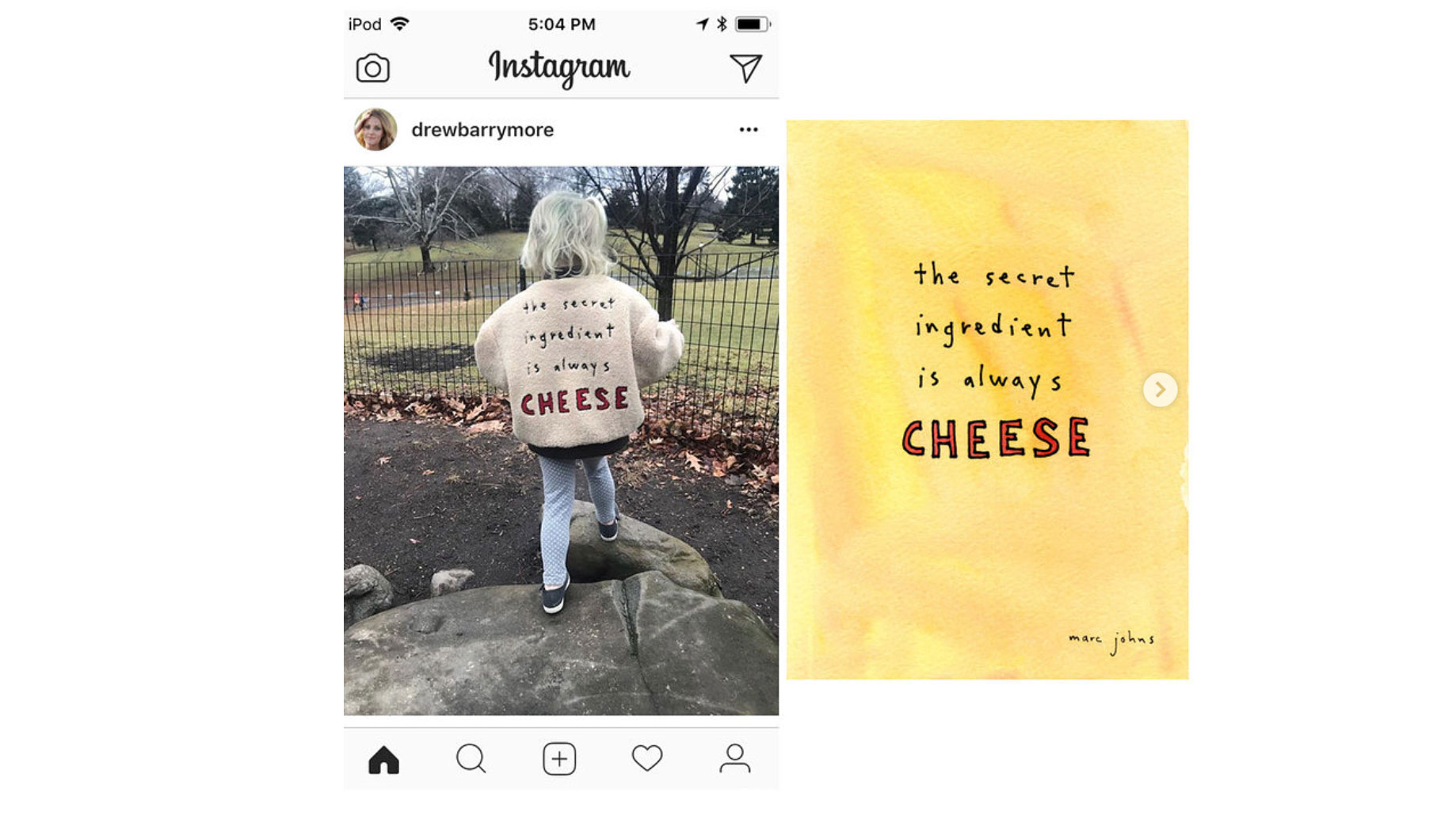
When you’re a victim of design plagiarism, the more noise you can make on social media the better. And when this happened to Canadian illustrator Marc Johns, he had some unexpected help.
He'd been alerted to the fact that South Korean kids’ fashion brand Jelly Mallow had used his artwork on a jacket without permission, because actress Drew Barrymore had posted a photo of her daughter wearing it. And the fame of its buyer not only brought the infringement to his attention, but gave him a fast route to whipping up a social storm.
Johns posted about what had happened on Instagram and Twitter, and soon hundreds of people left comments on both Jelly Mallow's account and Drew Barrymore's own post. The actress herself soon responded, and the story turned out to have a very happy ending.
"Jelly Mallow paid me royalties for all past usage of my designs, and we now have a new, ongoing licensing arrangement for them to use my artwork on future clothing collections," Johns explains. "Despite huge language barriers and time zone differences, Jelly Mallow has been very accommodating and transparent throughout the whole process, and very willing to make things right. Please make sure this is included in your article. They're good people." He's even now talking to Drew Barrymore's representatives about a possible project together.
Many people have been surprised by this positive outcome, he adds. "But I have had good outcomes with other companies that have ripped me off in the past as well. It made me realise that other artists could probably use some help with this issue, so I ended up offering an online class on the subject.
"I think there are still many many people and companies out there who are just plain clueless about copyright issues," Johns believes. "Most infringement cases are caused by ignorance more than deliberate theft: they think that if it's on the internet, it's free for them to use however they like. We need to do so much more to educate people that most images belong to someone. And sometimes that someone is an artist, trying to make a living and support a family."
Read more:

Tom May is an award-winning journalist specialising in art, design, photography and technology. His latest book, The 50 Greatest Designers (Arcturus Publishing), was published this June. He's also author of Great TED Talks: Creativity (Pavilion Books). Tom was previously editor of Professional Photography magazine, associate editor at Creative Bloq, and deputy editor at net magazine.
